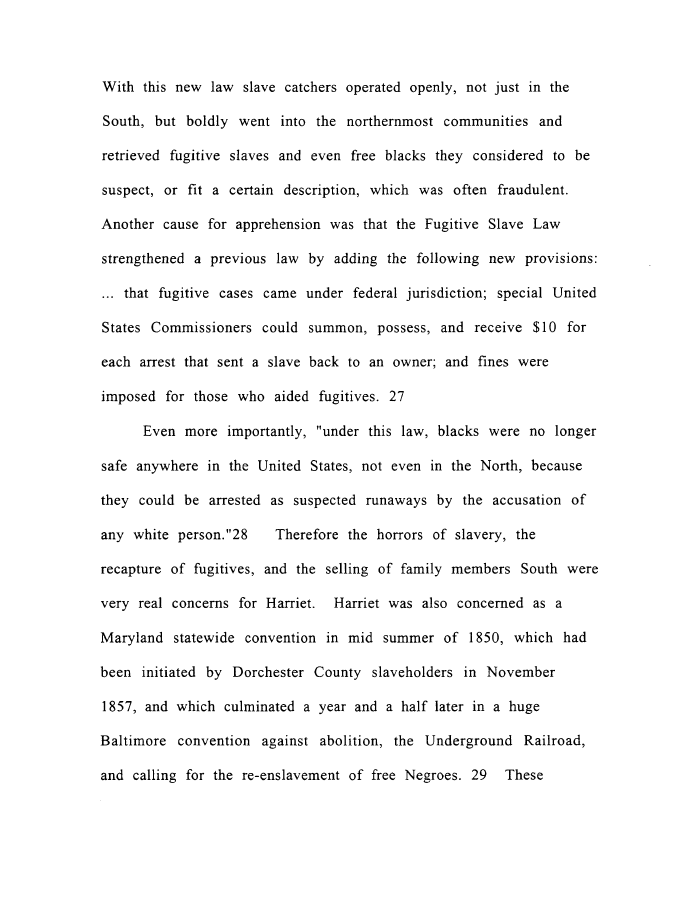 |
||||
|
TASK FORCE TO STUDY THE HISTORY AND LEGACY OF SLAVERY IN MARYLAND (Final Report) 1999/12/31 MdHR 991422 MdHR 991422, Image No: 323 Print image (42K) |
 |
||||
|
TASK FORCE TO STUDY THE HISTORY AND LEGACY OF SLAVERY IN MARYLAND (Final Report) 1999/12/31 MdHR 991422 MdHR 991422, Image No: 323 Print image (42K) |
| With this new law slave catchers operated openly, not just in the South, but boldly went into the northernmost communities and retrieved fugitive slaves and even free blacks they considered to be suspect, or fit a certain description, which was often fraudulent. Another cause for apprehension was that the Fugitive Slave Law strengthened a previous law by adding the following new provisions: ... that fugitive cases came under federal jurisdiction; special United States Commissioners could summon, possess, and receive $10 for each arrest that sent a slave back to an owner; and fines were imposed for those who aided fugitives. 27 Even more importantly, "under this law, blacks were no longer safe anywhere in the United States, not even in the North, because they could be arrested as suspected runaways by the accusation of any white person."28 Therefore the horrors of slavery, the recapture of fugitives, and the selling of family members South were very real concerns for Harriet. Harriet was also concerned as a Maryland statewide convention in mid summer of 1850, which had been initiated by Dorchester County slaveholders in November 1857, and which culminated a year and a half later in a huge Baltimore convention against abolition, the Underground Railroad, and calling for the re-enslavement of free Negroes. 29 These |